Local Specialties
Andong, the Capital of Korean Spirit
The spirit of Andong’s artisanship lives on in every items produced in Andong.
-
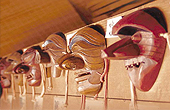 Hahoe Mask Hahoe masks are carved wooden artifacts from an alder tree. The masks are covered with hanji , traditional Korean paper, and painted. Lacquer is then applied. The mask is being used for a special mask dance. There are eleven masks of ten different kinds: Gaksi(bride), Jung(Buddhist monk), Yangban(aristocrat), Seonbi (scholar), Choraengi(meddler), Imae(fool), Bune(flirtatious young woman), Baekjeong(butcher), Halmi(granny) and two Juji(imaginary lion) masks.
Hahoe Mask Hahoe masks are carved wooden artifacts from an alder tree. The masks are covered with hanji , traditional Korean paper, and painted. Lacquer is then applied. The mask is being used for a special mask dance. There are eleven masks of ten different kinds: Gaksi(bride), Jung(Buddhist monk), Yangban(aristocrat), Seonbi (scholar), Choraengi(meddler), Imae(fool), Bune(flirtatious young woman), Baekjeong(butcher), Halmi(granny) and two Juji(imaginary lion) masks. -
 Andong Hanji (Korean Traditional Paper) Andong mulberry trees, cultivated in a traditional method by using hands are regarded as Korea’s best product for manufacturing traditional paper. Andong is proud its clean environment and two important material, the pure water and abundant mulberry trees is the reason for the best quality of Korean Paper.
Andong Hanji (Korean Traditional Paper) Andong mulberry trees, cultivated in a traditional method by using hands are regarded as Korea’s best product for manufacturing traditional paper. Andong is proud its clean environment and two important material, the pure water and abundant mulberry trees is the reason for the best quality of Korean Paper. -
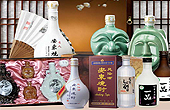 Andong Soju Intangible Cultural Property No.12
Andong Soju Intangible Cultural Property No.12
Andong soju(Korean alcoholic beverage) is made from rice that has been distilled three times. It is made from a recipe handed down by a prominent family in Andong and is designated as Gyeongsangbukdo Province Intangible Cultural Property No. 12. All the equipment needed for making soju, such as rings, bottles and cups, along with Andong’s traditional table setting, are displayed in an Andong Soju exhibition hall. -
 Andong Sanyak(Traditional Korean Medicine) Andong produces seventy percent of all Korean Sanyak, a traditional medical herb. Its all natural ingredients aid in the functioning of stomach and lungs. It also combats diabetes and relieves constipation.
Andong Sanyak(Traditional Korean Medicine) Andong produces seventy percent of all Korean Sanyak, a traditional medical herb. Its all natural ingredients aid in the functioning of stomach and lungs. It also combats diabetes and relieves constipation. -
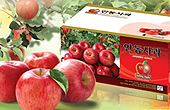 Andong Apples Andong is the nation’s largest apple producing region. Andong apples have been recognized for their fine color, sweetness and crisp taste.
Andong Apples Andong is the nation’s largest apple producing region. Andong apples have been recognized for their fine color, sweetness and crisp taste. -
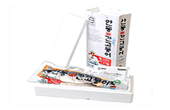 Andong Salted Mackerel Visitors, taking note of the distance of the city from the sea, might be surprised to know that some of the best mackerel in Korea can be found in Andong. In the old days, most people in Andong had to bring fish from the sea, and it took one or two days for a fish peddler to make the journey. In order to keep the fish fresh, salt was put on the mackerel. This unique style of preparation was handed down through generations and resulted in the delicious mackerel that can now be found throughout the city.
Andong Salted Mackerel Visitors, taking note of the distance of the city from the sea, might be surprised to know that some of the best mackerel in Korea can be found in Andong. In the old days, most people in Andong had to bring fish from the sea, and it took one or two days for a fish peddler to make the journey. In order to keep the fish fresh, salt was put on the mackerel. This unique style of preparation was handed down through generations and resulted in the delicious mackerel that can now be found throughout the city. -
 Sang-wang Mushroom Andong Sang-wang Mushroom, which was the first to be patented for cultivation by human-controlled lumber growing method, is tasty, which can be eaten by itself or used as an ingredient. These mushrooms are exported to the United States and Japan.
Sang-wang Mushroom Andong Sang-wang Mushroom, which was the first to be patented for cultivation by human-controlled lumber growing method, is tasty, which can be eaten by itself or used as an ingredient. These mushrooms are exported to the United States and Japan. -
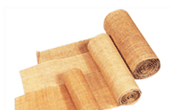 Andong Hemp Cloth Intangible Cultural Property No.1
Andong Hemp Cloth Intangible Cultural Property No.1
Thanks to a favorable climate and soil, Andong hemp cloth is of the highest quality. It is known for its fine ply and beautiful color. -
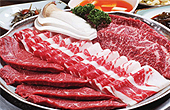 Andong Beef This meal includes the delectable taste of Andong beef, which is normally served with a variety of vegetable dishes (including Kimchi) and seasonal dishes, which all add up to a tasty feast.
Andong Beef This meal includes the delectable taste of Andong beef, which is normally served with a variety of vegetable dishes (including Kimchi) and seasonal dishes, which all add up to a tasty feast. -
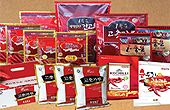 Andong Red Pepper Andong is the number-one red pepper producing area in Korea. Andong Red Peppers, which accounts for 45% of the whole domestic distribution, taste sweet and hot and goes well in any dish. They are exported to many countries, including the United States and Japan.
Andong Red Pepper Andong is the number-one red pepper producing area in Korea. Andong Red Peppers, which accounts for 45% of the whole domestic distribution, taste sweet and hot and goes well in any dish. They are exported to many countries, including the United States and Japan. -
 Andong Sesame Andong Sesame is recognized as the largest sesame in Korea. It has a light golden color and the aroma are nut-like and rich. These sesames are also used to produce sesame oil.
Andong Sesame Andong Sesame is recognized as the largest sesame in Korea. It has a light golden color and the aroma are nut-like and rich. These sesames are also used to produce sesame oil. -
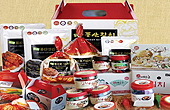 Pungsan Kimchi Using pure ground red peppers and natural mineral water from 150-meters below, Andong has succeeded in reviving the traditional taste of Kimchi.
Pungsan Kimchi Using pure ground red peppers and natural mineral water from 150-meters below, Andong has succeeded in reviving the traditional taste of Kimchi.





